STONEY BRIDGE (aka Anjou Bridge)
Stony Bridge is
situated about 100m east of the entrance to the former Premonstratensian
Abbey of St Mary and St John, and replaces a bridge built by the monks during
the 14th century, which was probably made of stone piers and a wooden parapet
The antiquary, John
Leland reports that the bridge was made of wood when he crossed it in 1542.
Stony Bridge was
rebuilt in stone during the 17th century under Henry, the 3rd Earl of
Southampton, whose grandfather had acquired the Abbey, from then on known as
Place House, after the Dissolution of the Monasteries.
Henry commissioned a
survey of the estate, on which he had undertaken major works, and the 1610
map produced as a result shows `Stoney Bridge'.
Local knowledge
suggests that the date `1625' was inscribed on the bridge, but this is no
longer visible. Stony Bridge is made of roughly coursed stone and comprises
two arches, each with a 2.7m span.
It is a Scheduled
Monument, Listed Grade II and is also known as the Anjou Bridge, from the
association with the marriage of Henry VI and Margaret of Anjou in 1445..
.
|
click on any image to see larger version
.
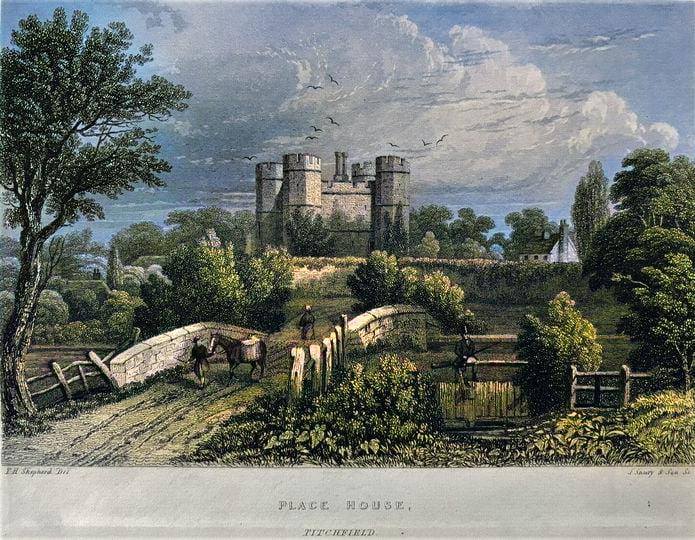
a colourized image of Stoney Bridge
|
.
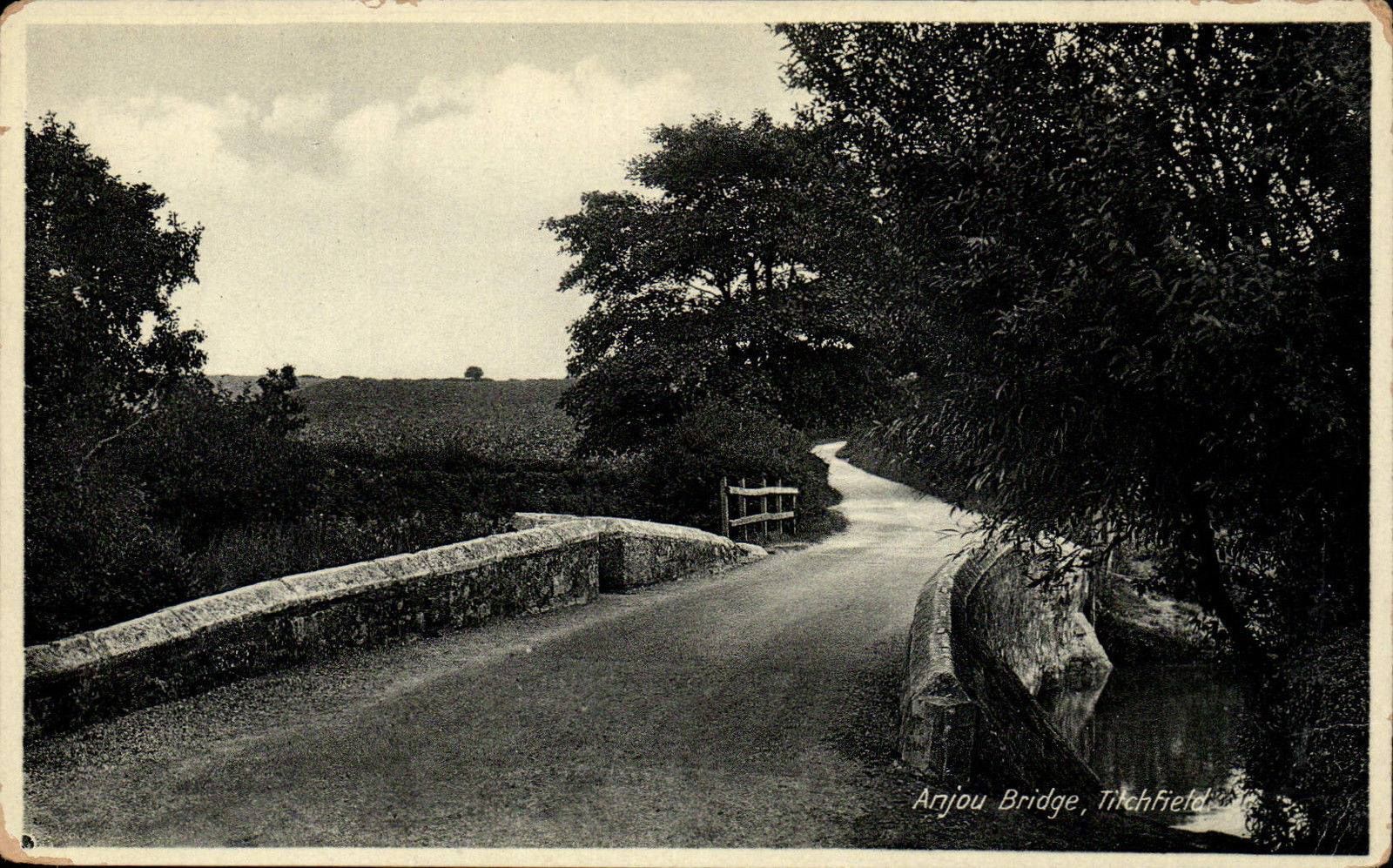
an old photo of Stoney Bridge and start of the hill
|
.
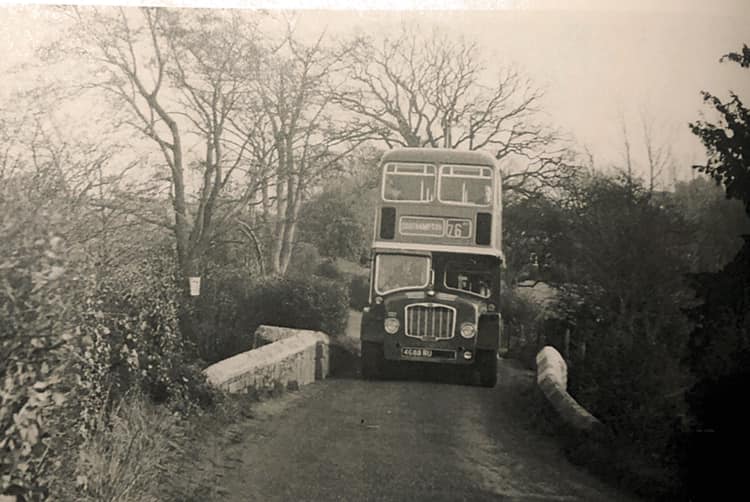
1970s photo 76 bus over Stoney Bridge
|
.
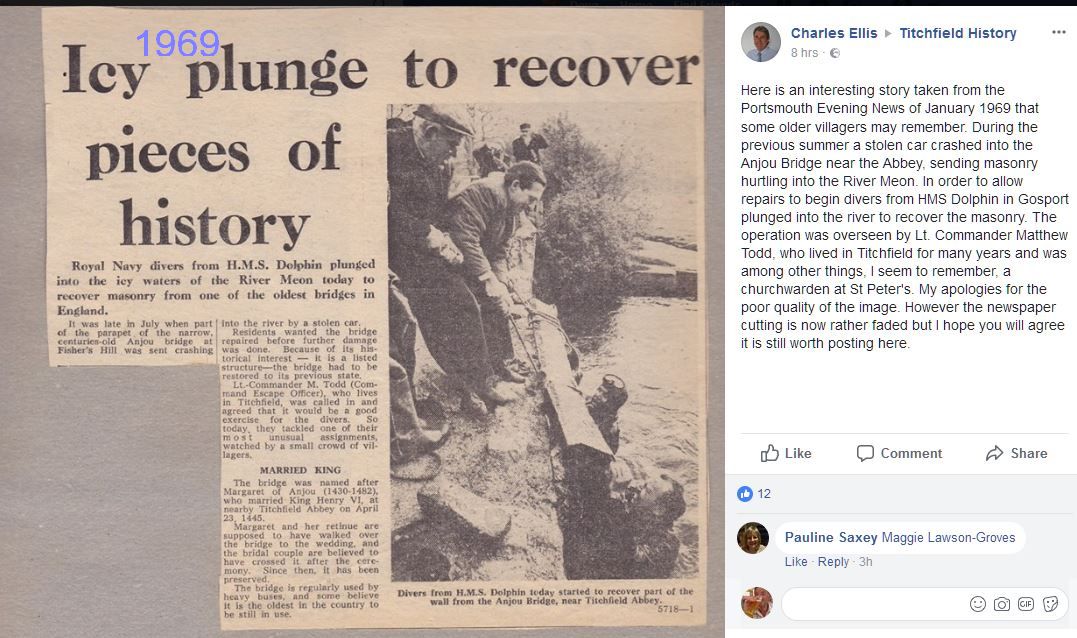
Stoney Bridge 1969 press item
|
|
CATISFIELD
HILL (aka STONEY /STONY BRIDGE HILL , later Fishers Hill)
‘Gateway to the
West’ - At one time All the Traffic East and West. Went up and
down Fishers Hill. (Imagine that today: all the traffic of the M27 plus
Rail plus A27 …..)
The route from Fareham
came past Blackbrook, over ‘Catisfield Common’ and bore slightly right at the
Peak Lane junction (by Heathfield Manor – today’s ‘Oast & Squire’) onto
Catisfield Road.
Then into or just past
Catisfield, down Fishers Hill, left at the Abbey, past Titchfield Mill and
into the village with a right turn by The Wheatsheaf.
1811 - On first of June the direct road
from Heathfield /Peak Lane junction into Titchfield, entering past the
tanneries and the Wheatsheaf, is said to have been opened. (This road down
from the Catisfield Lane / Ranvilles Lane junction into Titchfield was also
known as 'Catisfield Hill'.)
This became part of
the Titchfield and Cosham Turnpike Trust (Act was published in 1810 for a
distance of 7miles 2 furlings and 180 yards), with Toll Houses at
Blackbrook, East Cams and Wymering. Opened in 1826.
So Catisfield was
bypassed to the South. Fishers Hill stayed open as a country lane (not yet the
‘rat run’ of later years…)
|
click on any image to see larger version
.
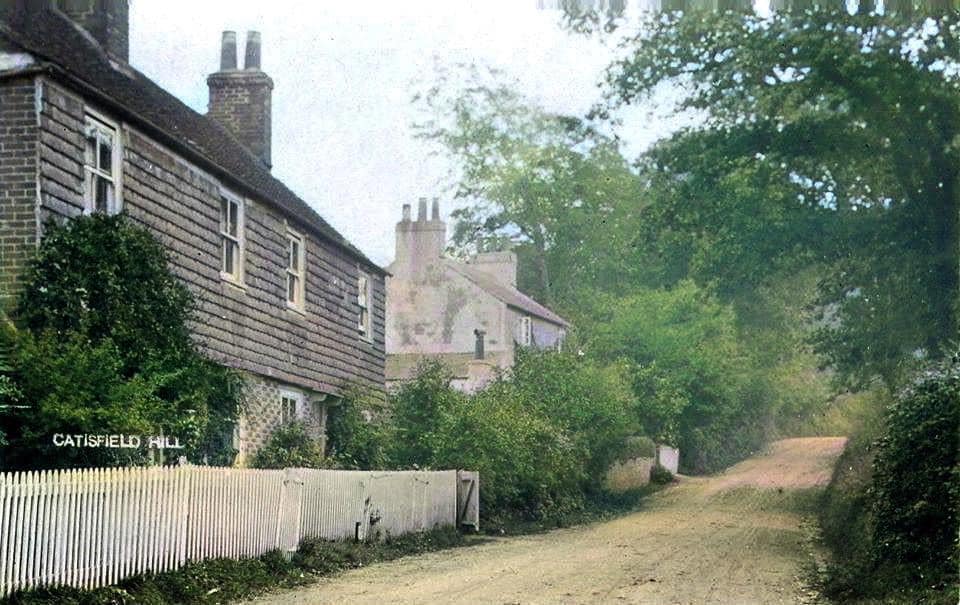
a colourized image of the cottages on the hill clearly labelled Catisfield Hill
|
.
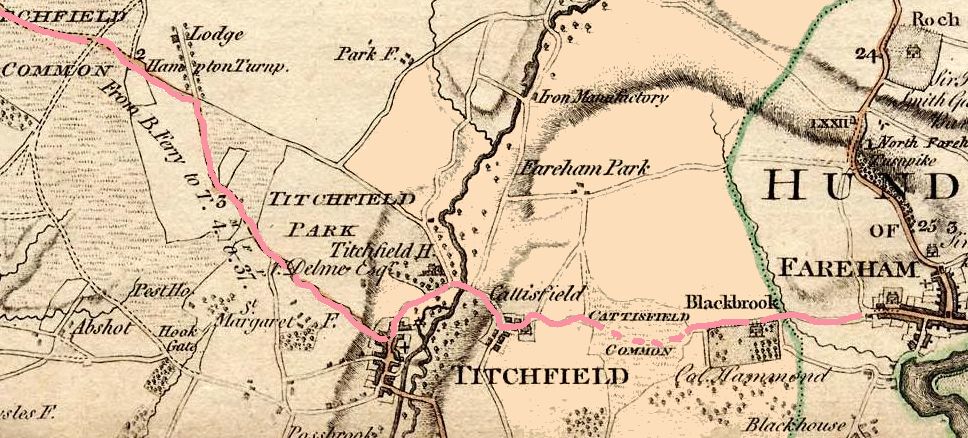
The Way West - all passed through Catisfield
|
.
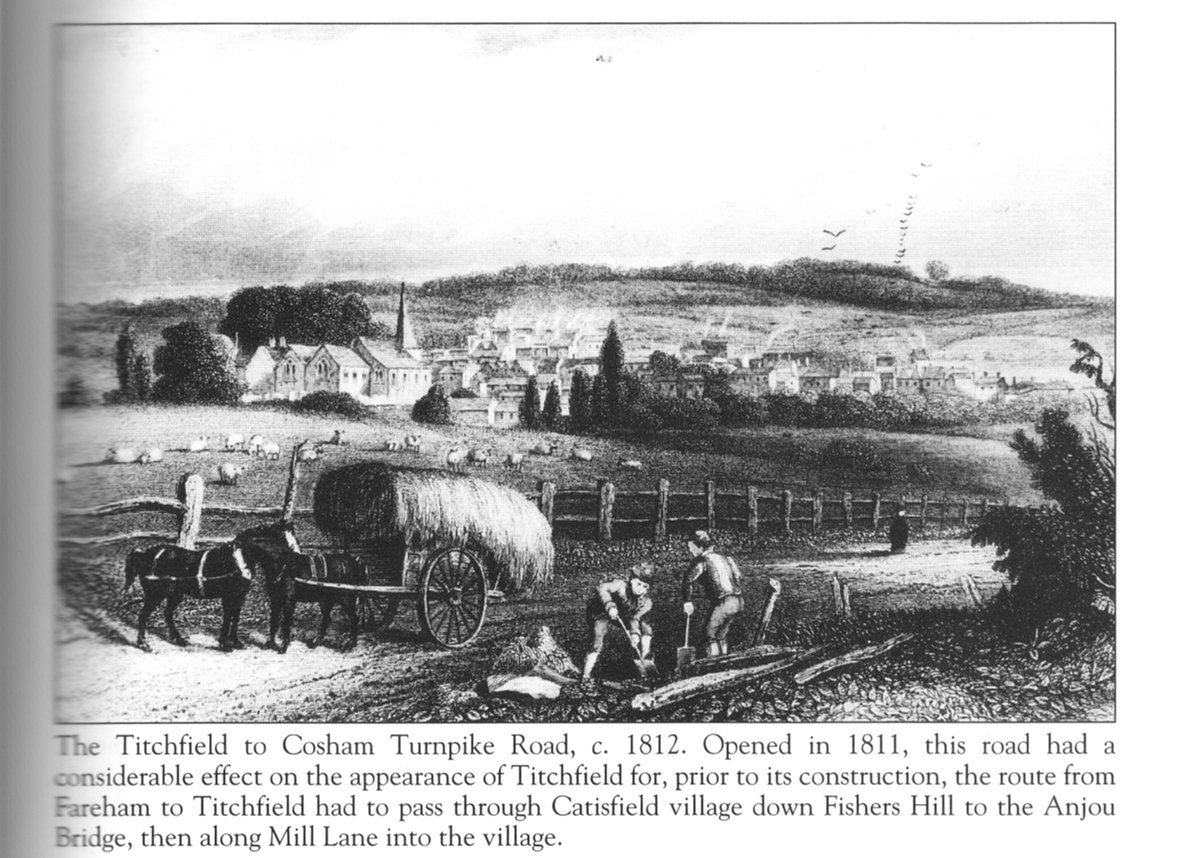
1812 - The Avenue construction (Titchfield-Cosham Turnpike)
|
.
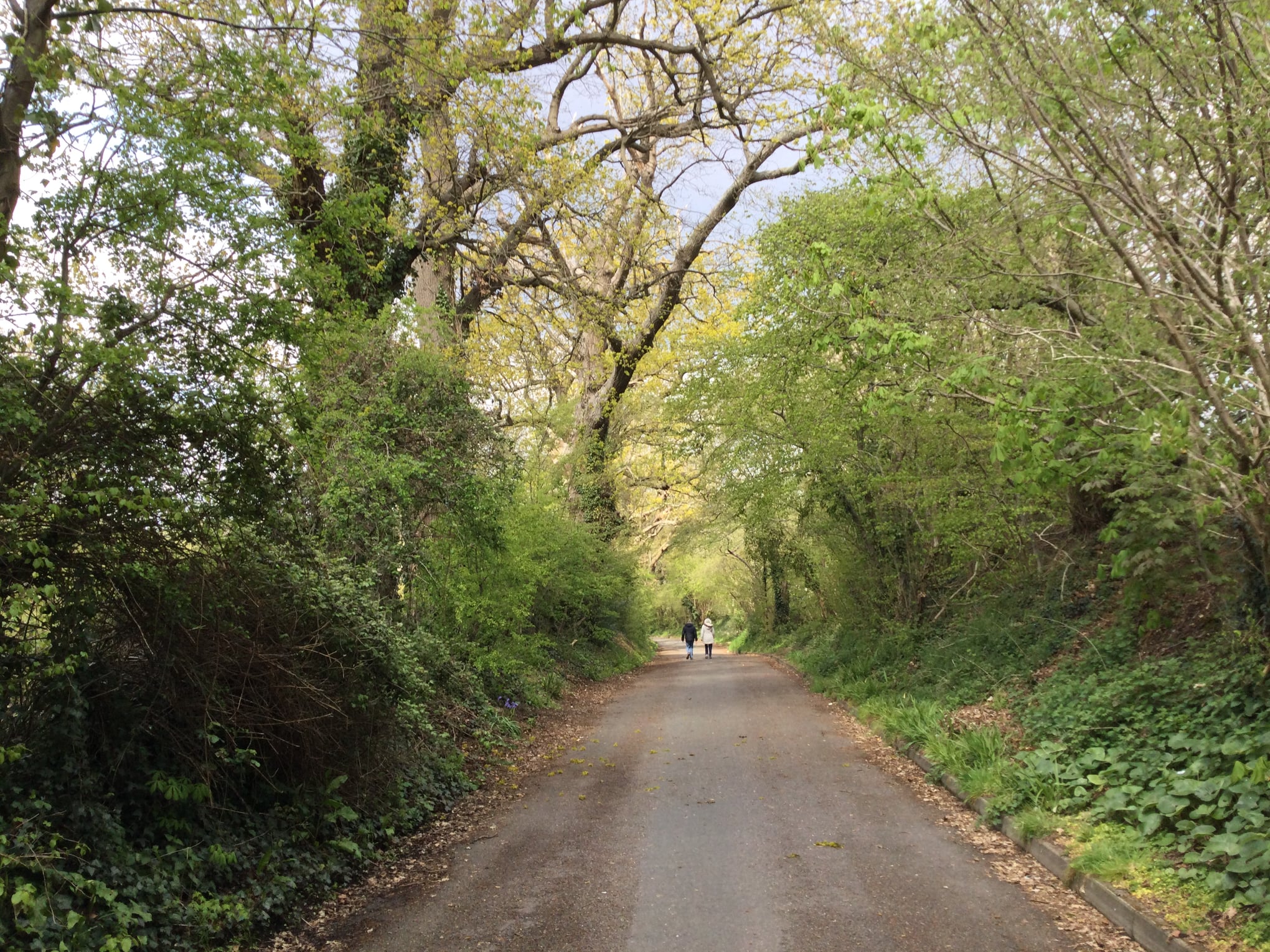
a quiet Fishers Hill
|
|
HIGHLANDS ROAD LINK (‘CATISFIELD NORTHERN
BYPASS’)
There was a period, depicted
in some old maps, when Catisfield was actually bypassed to the North.
Although Catisfield
Lane is shown on them turning north by the Post Office to start a descent
into the valley, it does not appear at this time to have joined with Fishers
Hill.
Instead Fishers Hill continued
up almost in a straight line, across the rear of Anjou cottages, to join
Highlands Road opposite Place House Close (location of the Catisfield Pound –
a staging post for the animals being driven to RN butchers at Gosport).
The top part of
Fishers Hill (the cutting above Orchards Cottage) appears on the maps of 1832
etc. This cutting could have been delayed due to funding, manpower and/or
land ownership issues.
Just above Orchard
Cottage the cutting bank is reinforced with some old stones probably from
Titchfield Abbey (or rather ‘Place House’, which was torn down 1781)
The Conservation Area
Assessment says “ it is not clear when this later link became
established but it
is likely to have been much earlier than 1810. This northern route, possibly
a drover’s track which bypassed the village, had disappeared by the mid C19
and is not marked on subsequent maps.”
So unfortunately
Henry VI didn’t actually go through Catisfield, - he just went by it.
|
click on any image to see larger version
.
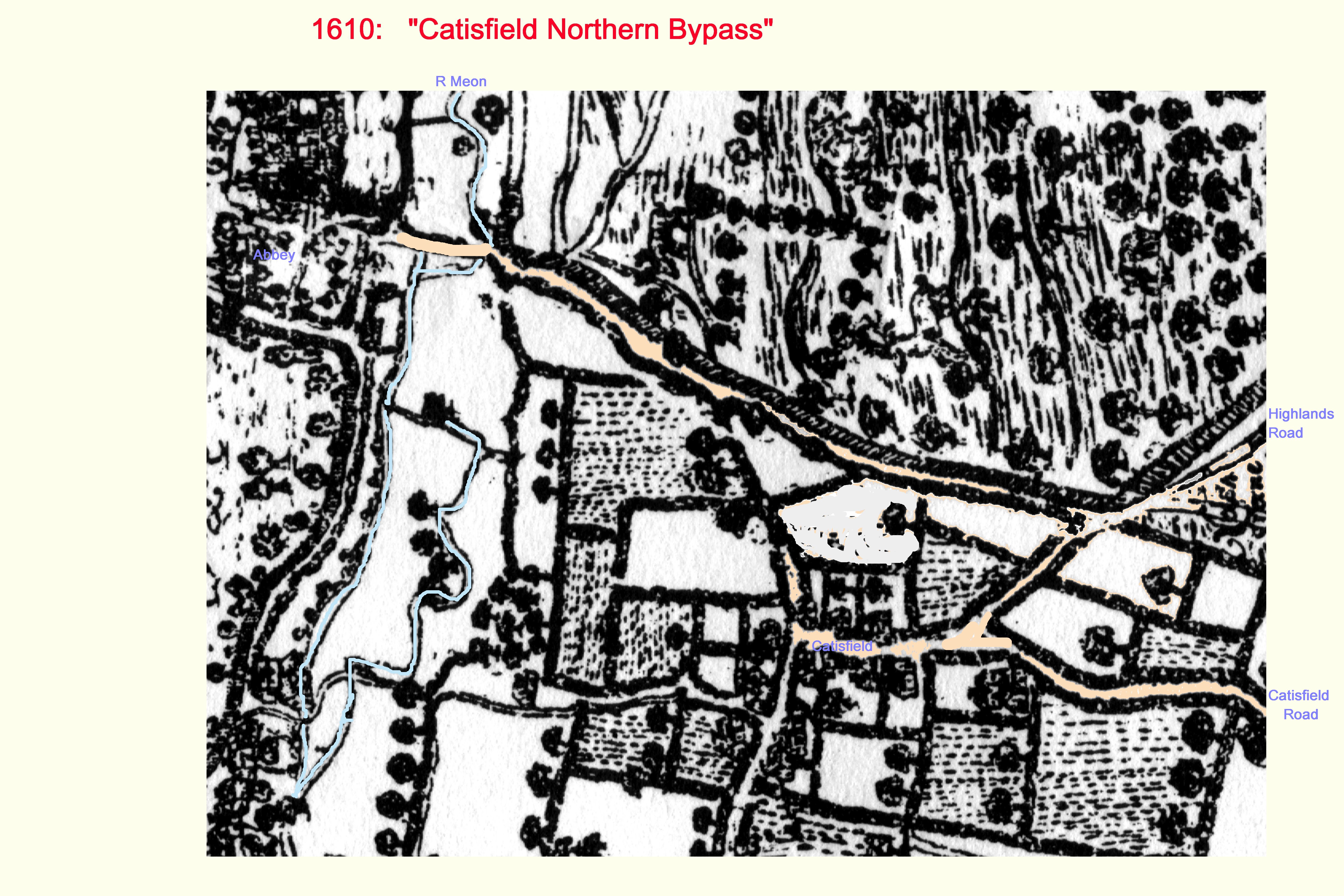
1610 map showing Fishers Hill going sraight to Highlands Road
|
.
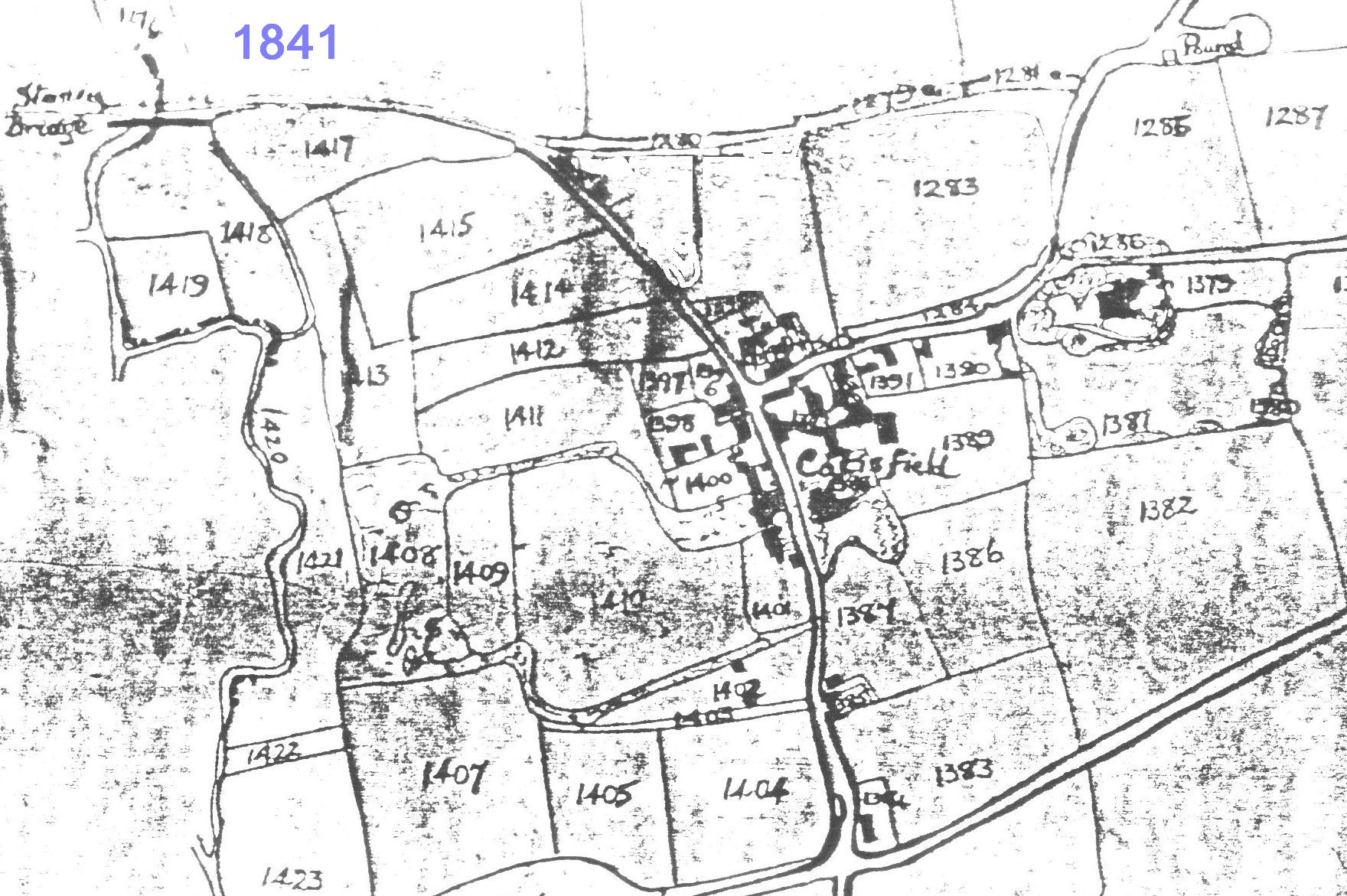
1841 map showing link road and the Pound
|
.
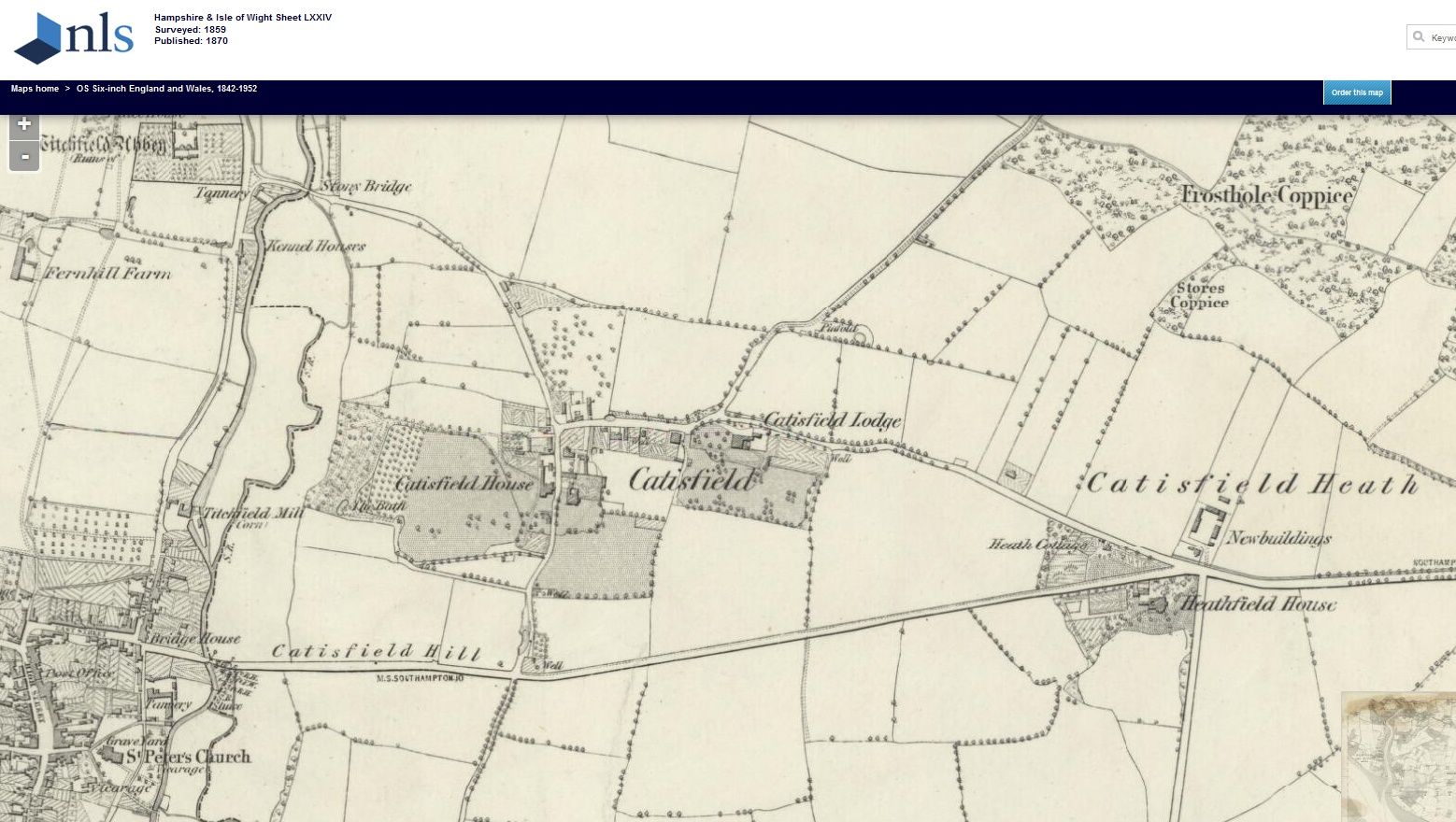
1870 map (surveyed 1859) showing no link road
|
.
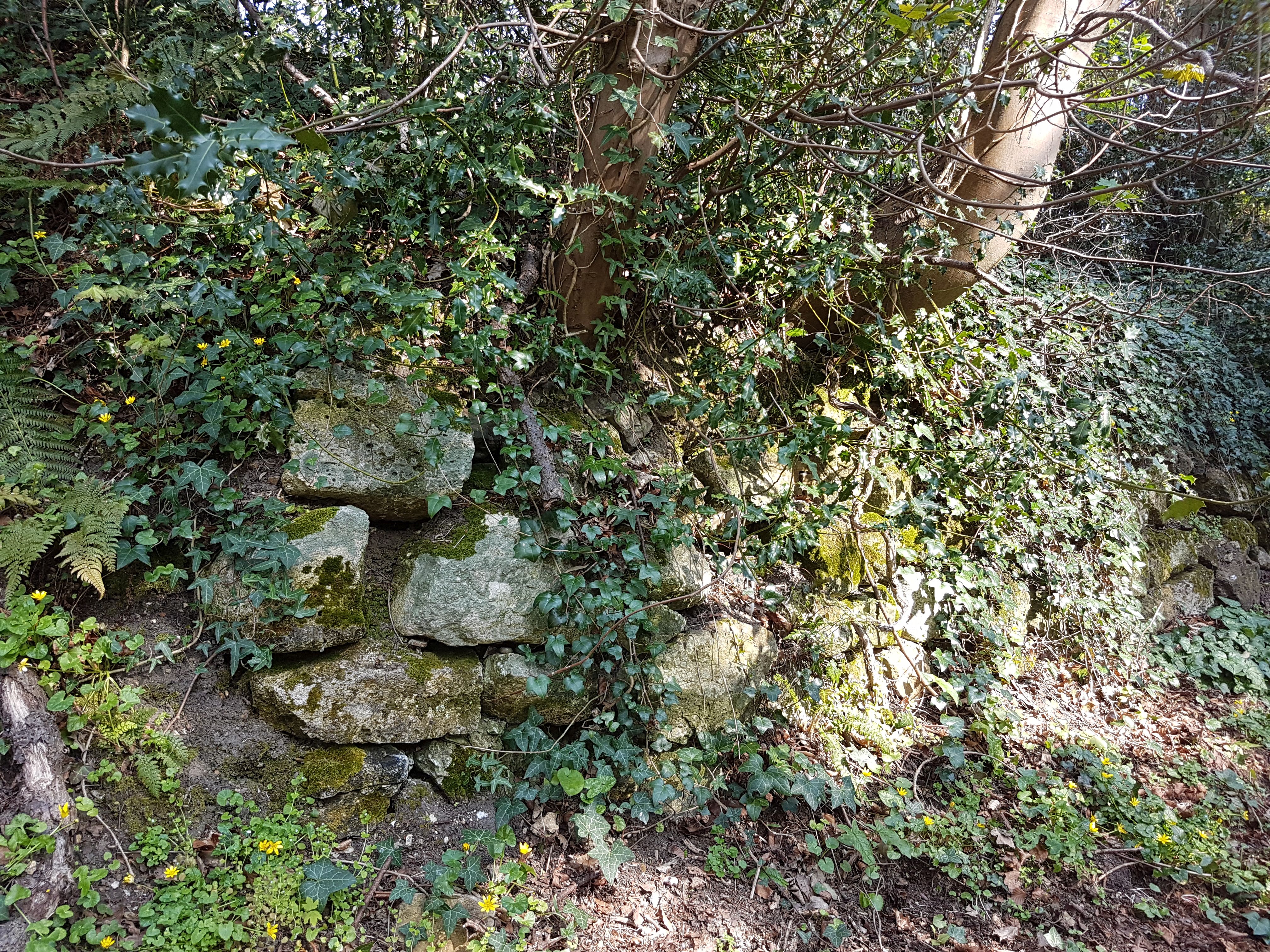
The salvaged stones on the bank of the top cutting
|
|
‘ANJOU COTTAGES’ (aka Stoneybridge Cottages )
Grade II
Halfway up Fishers
Hill we find a small collection of homes – an old small terrace of cottages
plus Orchard Cottage (c. 1837) just above, and the slightly newer Merrill
Cottage at the start of the (now vanished) Highlands Road link.
The terrace is a
listed Grade II Historic Building.
The terrace and its individual cottages have had various names
The 1901 census calls it
Stoneybridge Cottages and lists 5
homes in it (plus 2 actually in
Orchard Cottage)
The 1911 census calls it
Mount Pleasant and lists 4 homes (and 2 in the nearby Orchard Cottage).
More recently the terrace was three homes: Huntsman, Broadheath and Anjou, and now is just two dwellings: Huntsman, and Anjou Cottages
The two dwellings in Orchard Cottage and now just one.
|
click on any image to see larger version
.
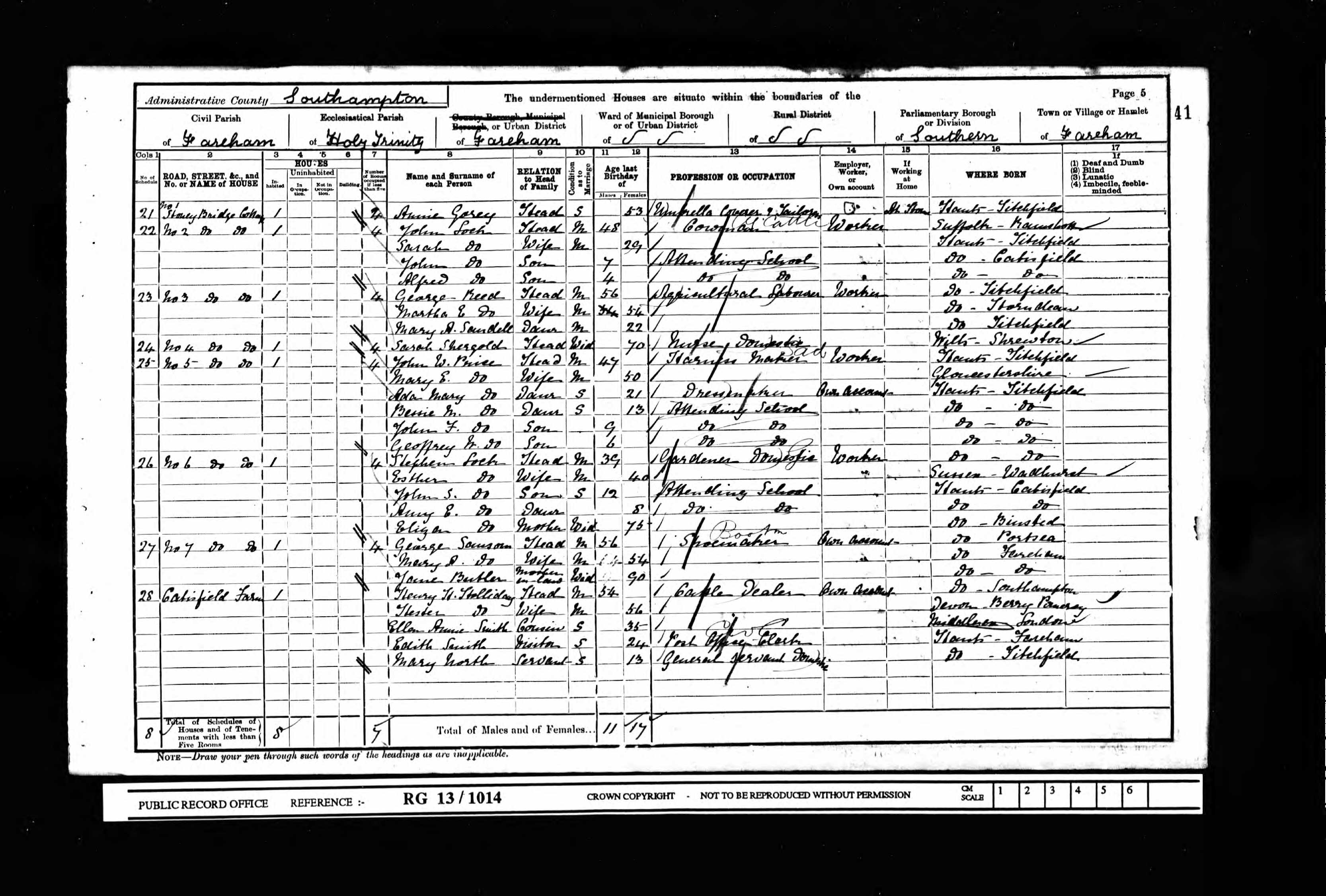
1901 Census Stoneybridge Cottages
|
.
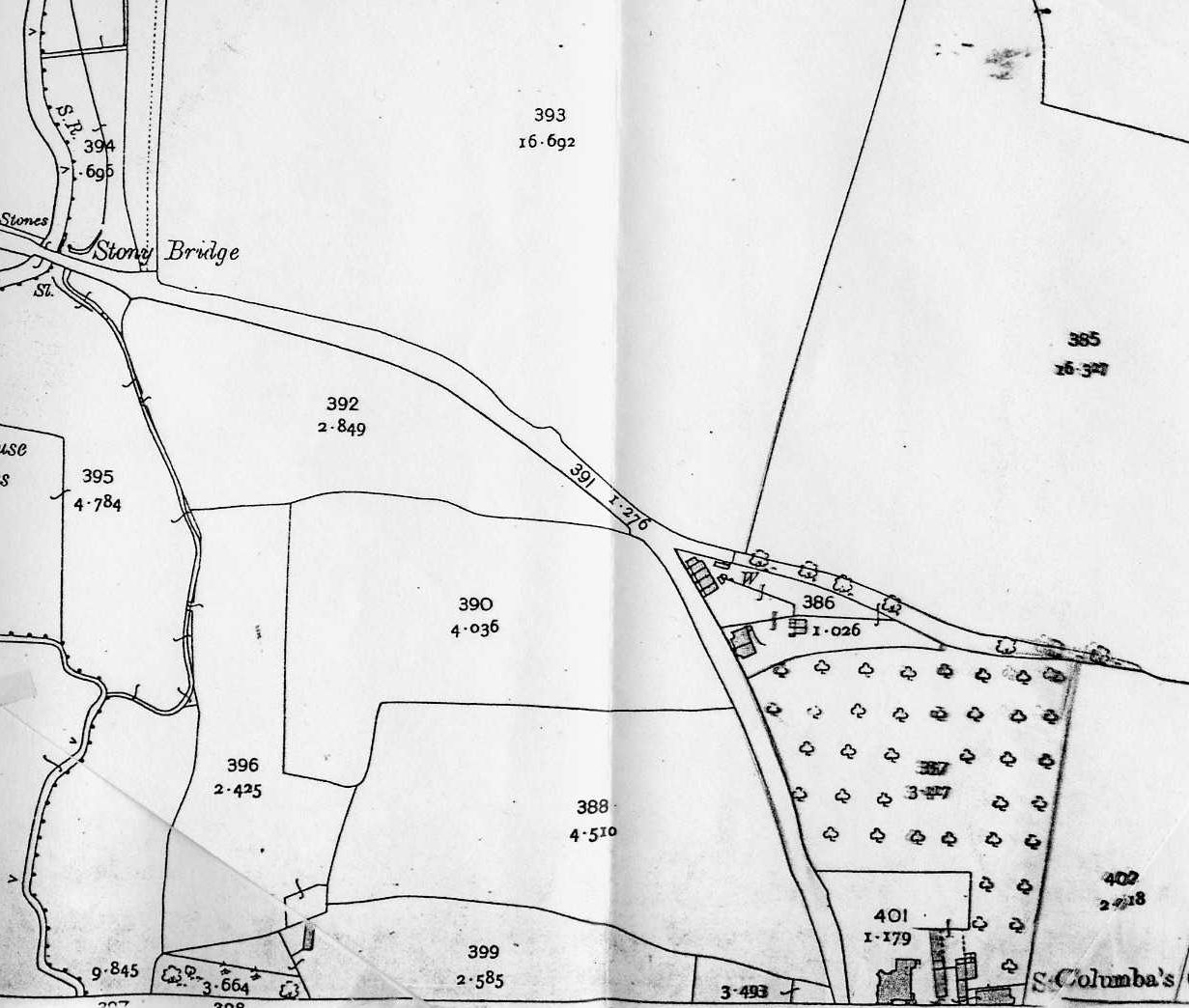
1909 map showing the cottages"
|
.
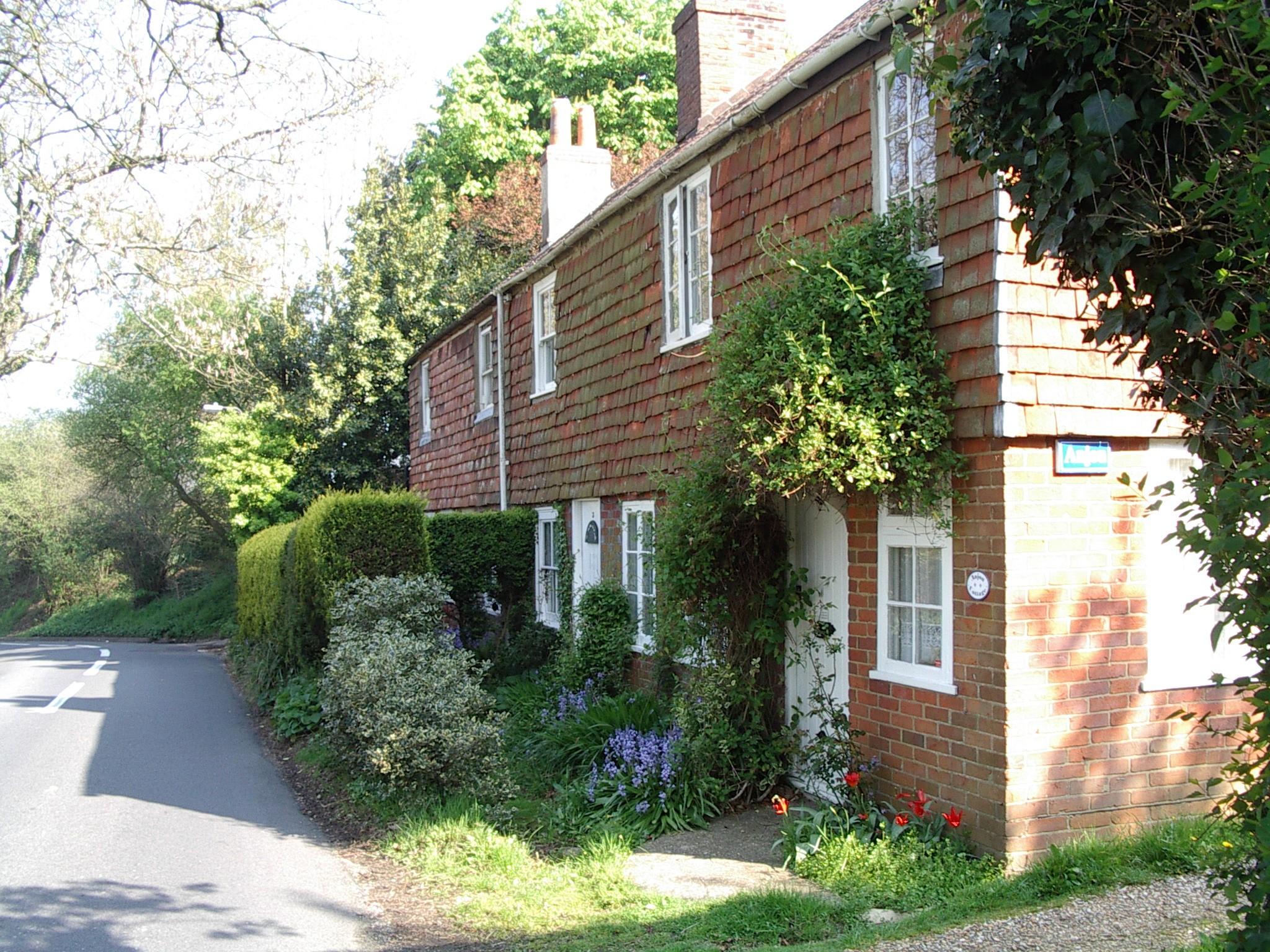
2004 image of the terrace - 5 upstairs windows indicate 5 original dwellings
|
.
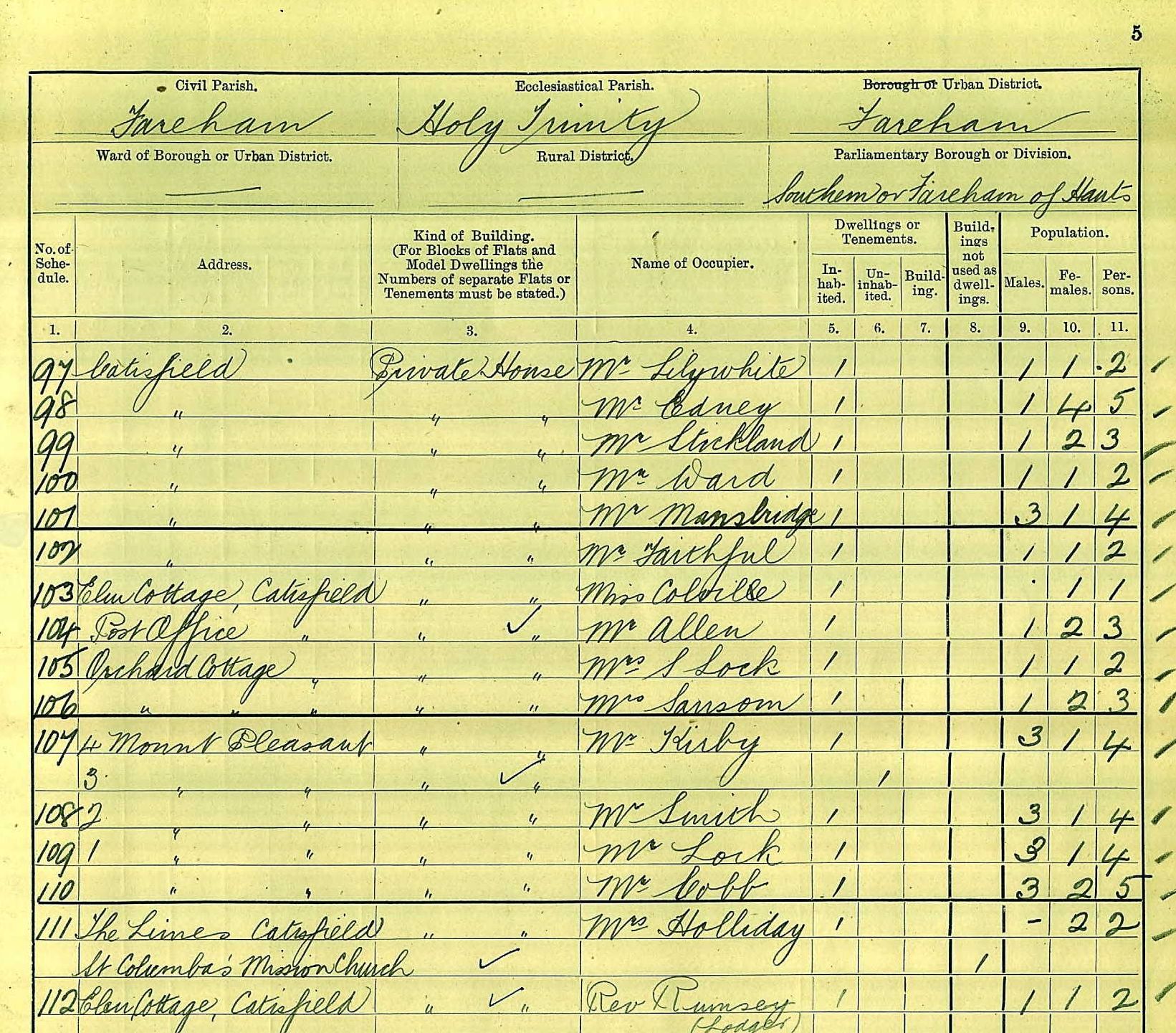
1911 Census summary Mount Pleasant etc.
|
|
MEON HOLT & Kingfishers
in 1955 and 1958: Surgeon Captain G. Woodhouse, of Meon Holt, Fisher's Hill,
Catisfield, appealed against a planning decision re the development of one acre
adjacent to his house for only one dwelling. He proposes to build three
houses on the plot.
The counsel for the planning authority said: “Fisher's Hill, a
pretty country lane leading down to the old Anjou Bridge over the Meon, was a
favourite local walk”.
. Permission
was given for the erection of one house only.
|
click on any image to see larger version
.
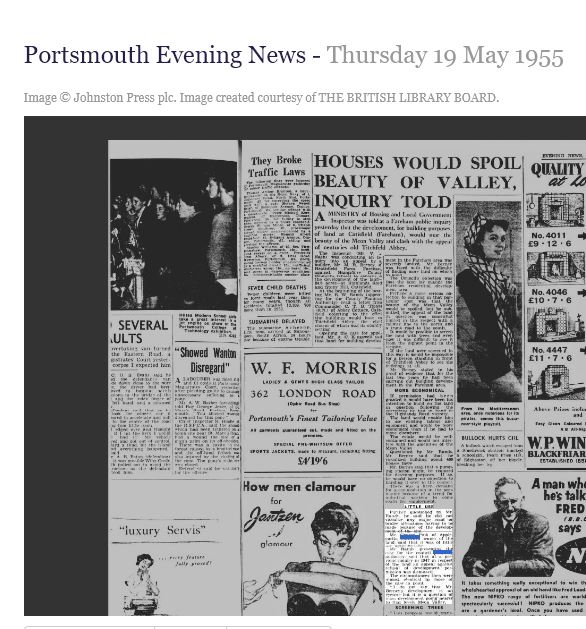
1955 planning enquiry report
|
.
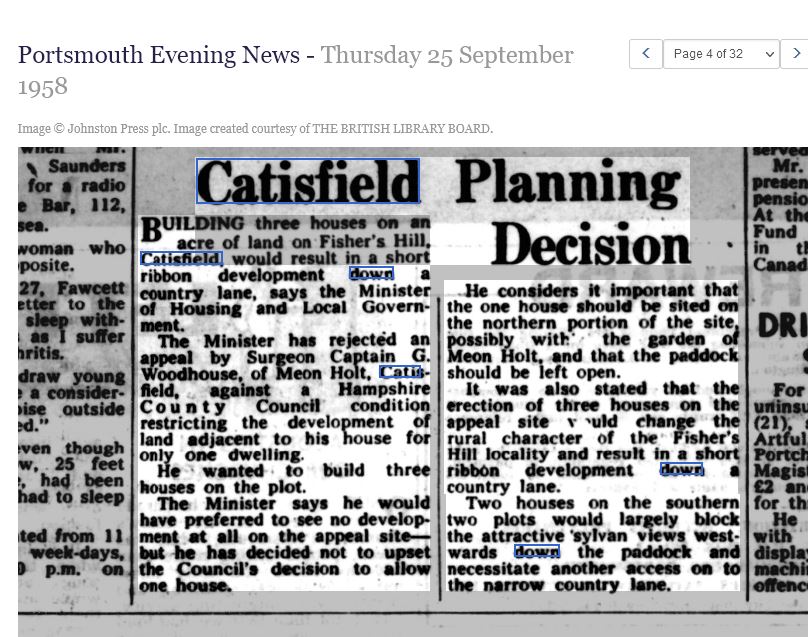
1958 planning enquiry report
|
<
|
POST OFFICE
This is a well-known
building, , however relatively little is known about it. The building was
part of the Catisfield House Estate.
A new sub-postoffice
was opened in July 1900. In 1909 it was decided to limit the opening hours
to 9.00am to 8.30pm(! )
Listed Building Grade 2 - thought to
have been built about 1720. Address: 2 Fishers
Hill
In the 1970s and 80s the Post Office was the hub and meeting place of Catisfield. If you wanted to know anything you popped along there. The very active shop part sold pretty well everything, including newspapers. There was even a Solicitor's office.
11/87 The Pecovers replace Mr & Mrs Burch, who had run the Post Office for 24 years
8/88 Richard and Sandra Frankland replace the Pecovers
.
.
|
click on any image to see larger version
.
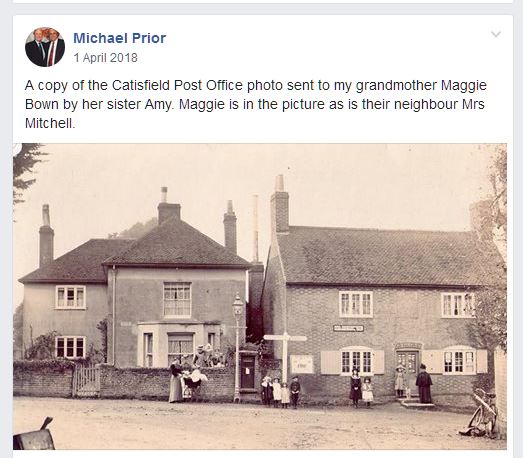
Catisfield Post Office 1906?
|
.
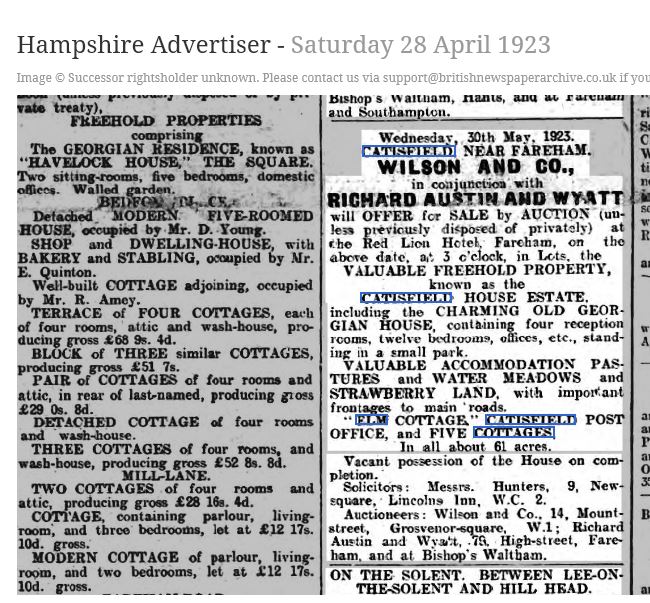
1923 Catisfield House ElmCott PostOffice sale.
|
.
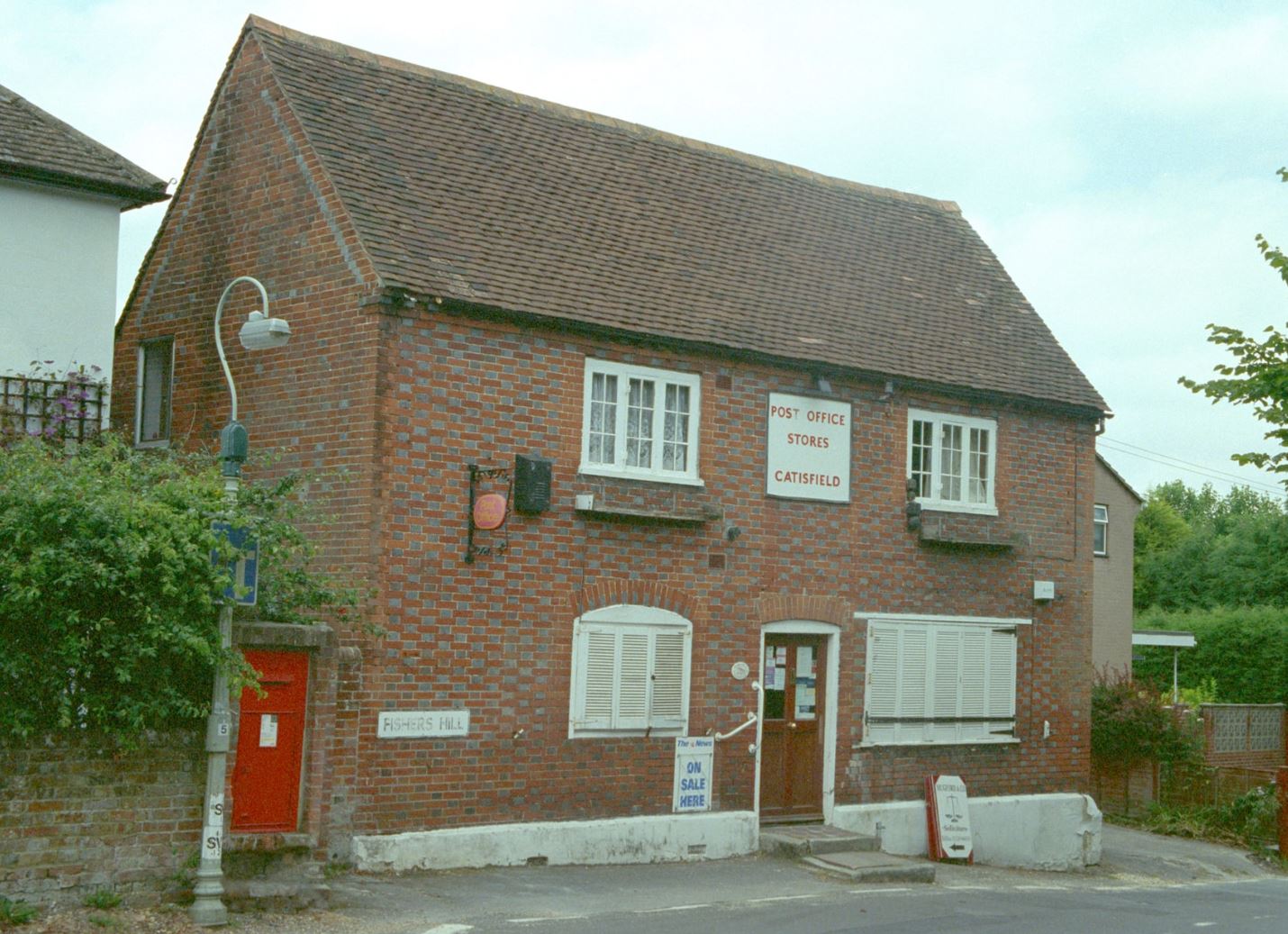
Catisfield Post Office and shop
|
.
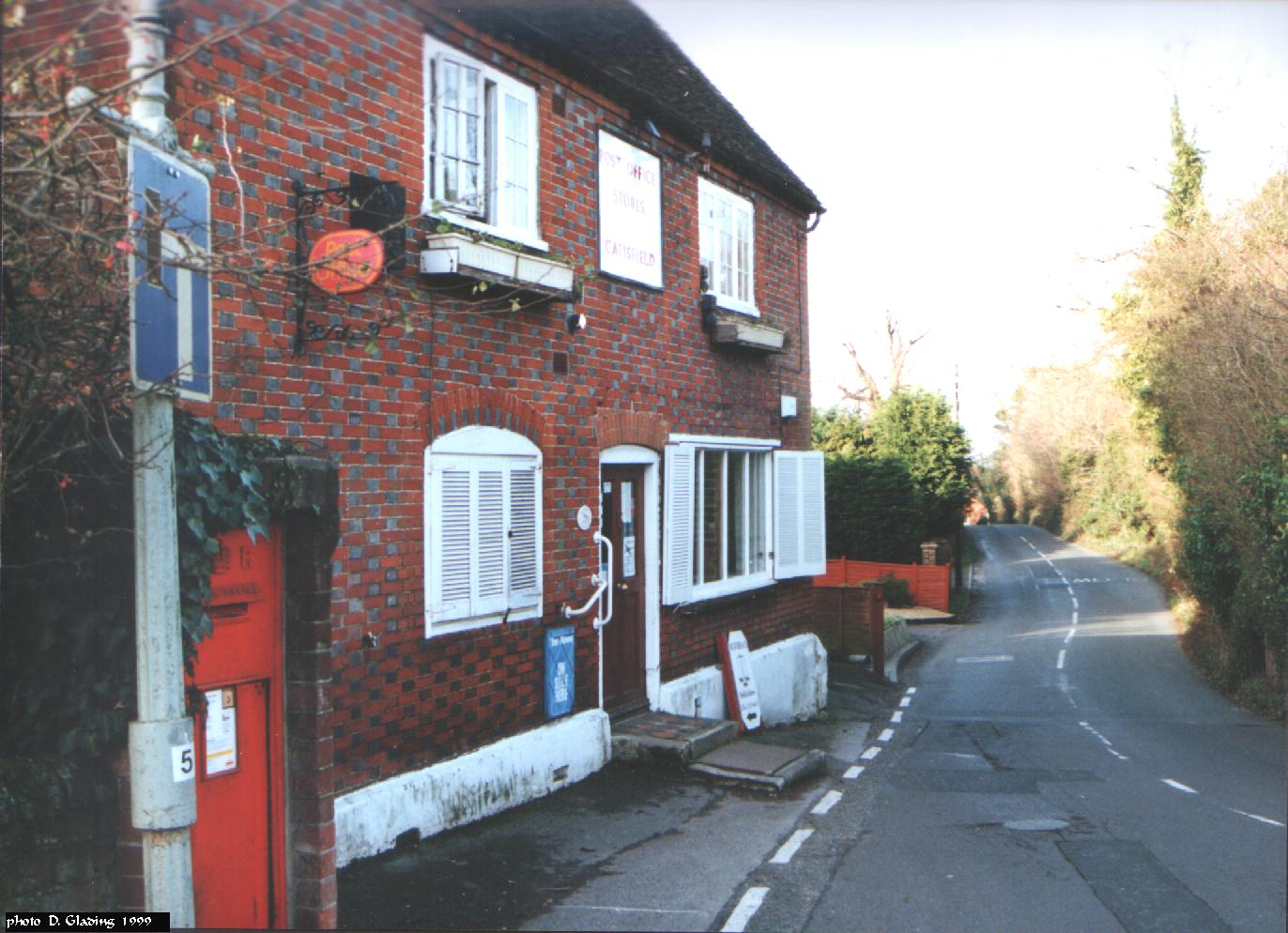
Catisfield Fishers Hill top and Post Office )1999)
|
|
The Future of The Hill ??
As of Aug2023 a decision
is awaited on closing the hill to vehicles to allow it to be used as a
healthy and peaceful and safe walk.
The trial closure was
very popular with pedestrians – but not with motorists in their hurry.
. .. .
.[if Fishers Hill was
still a nice straight road from Highlands down, think what speeds cars could
reach…..]
|
click on any image to see larger version
.
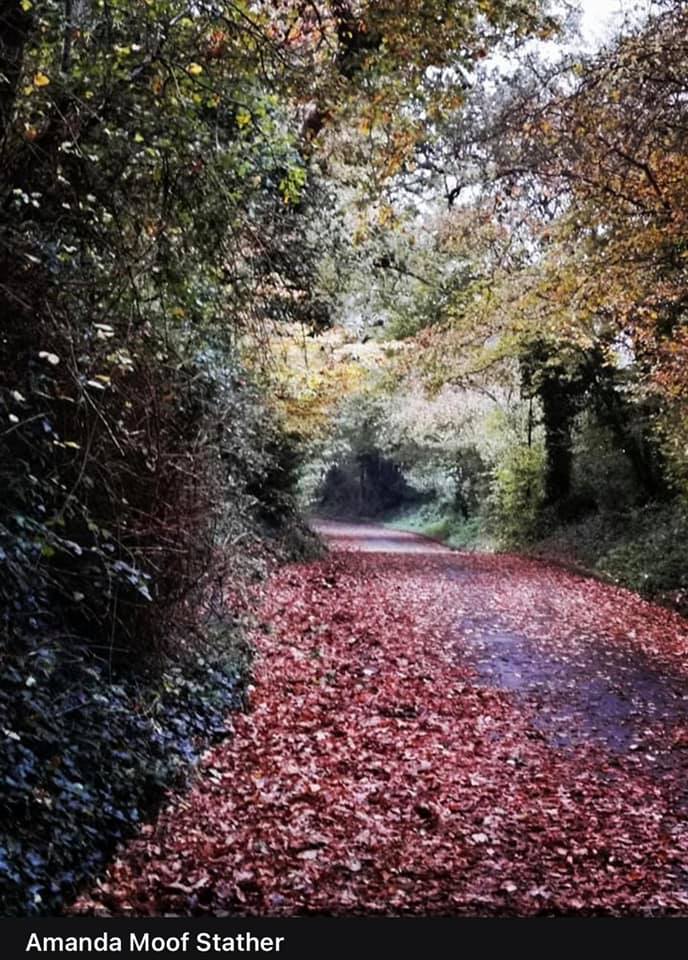
a quiet hill
|
.
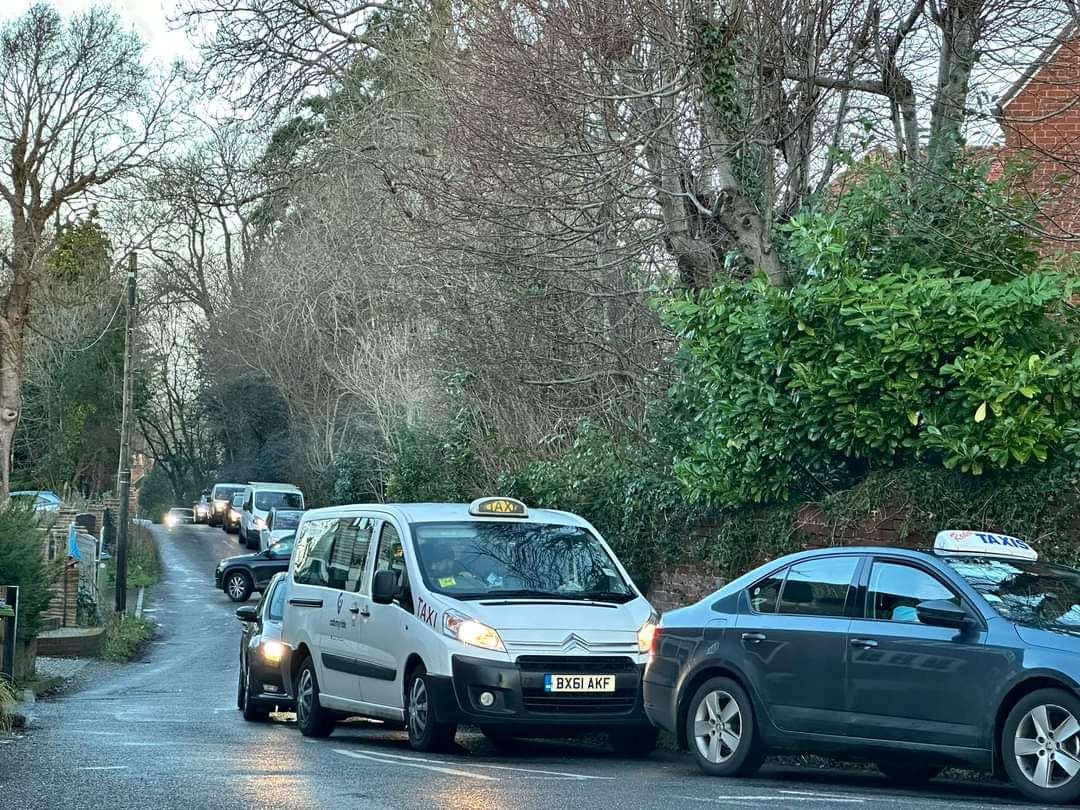
a busy hill
|
.
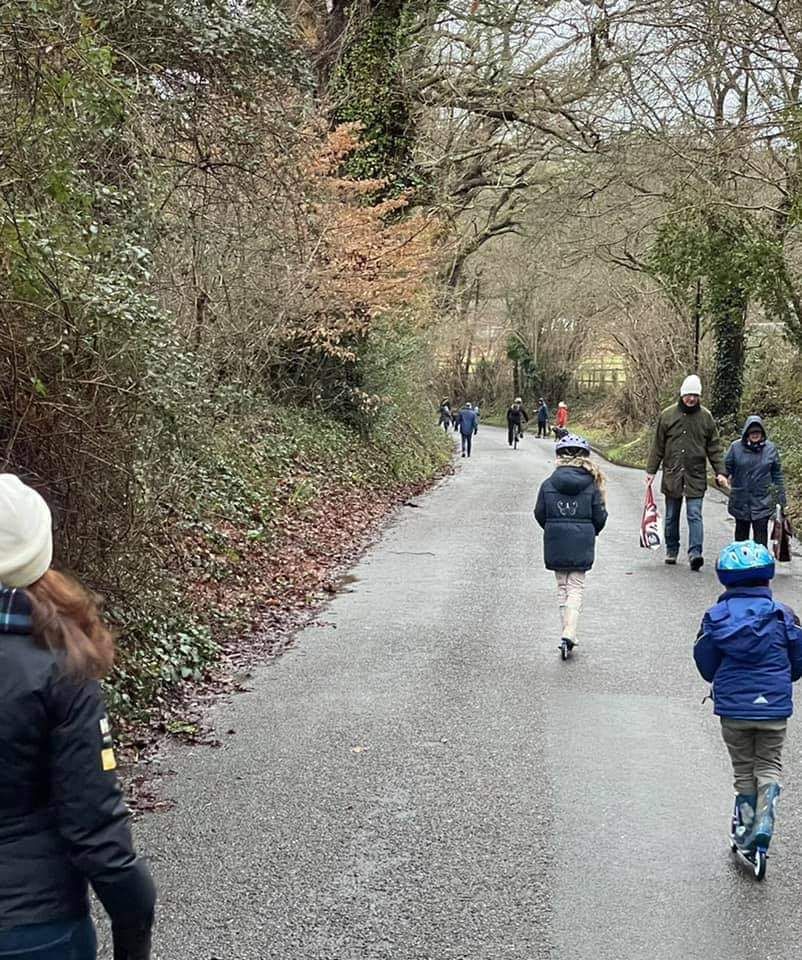
Catisfield Fishers Hill walkers.
|
.
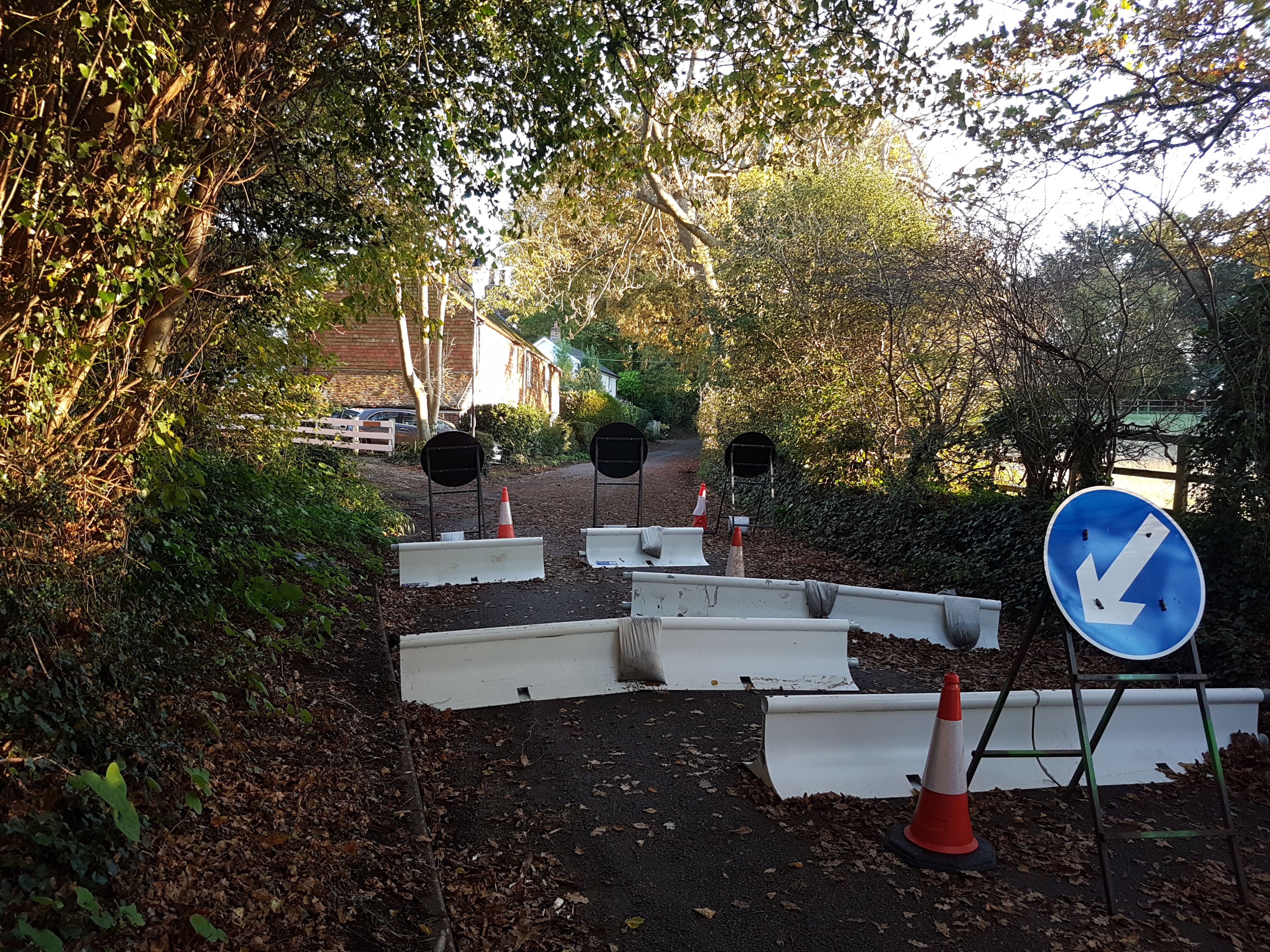
20201105 Fishers Hill slalom.
|
.
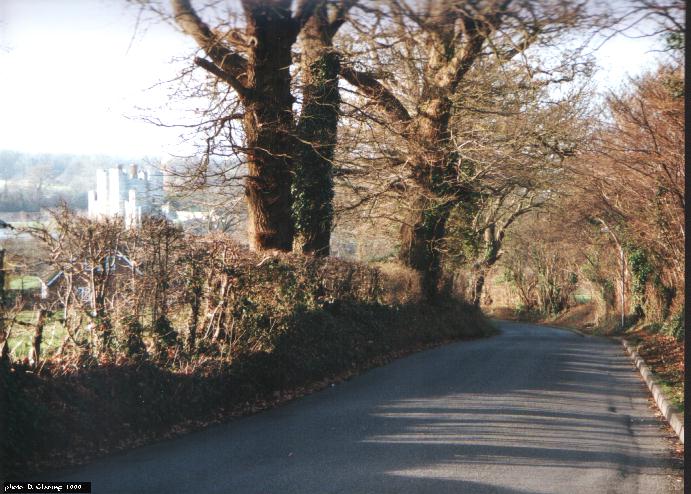
Catisfield Fishers Hill (1999)
|
.
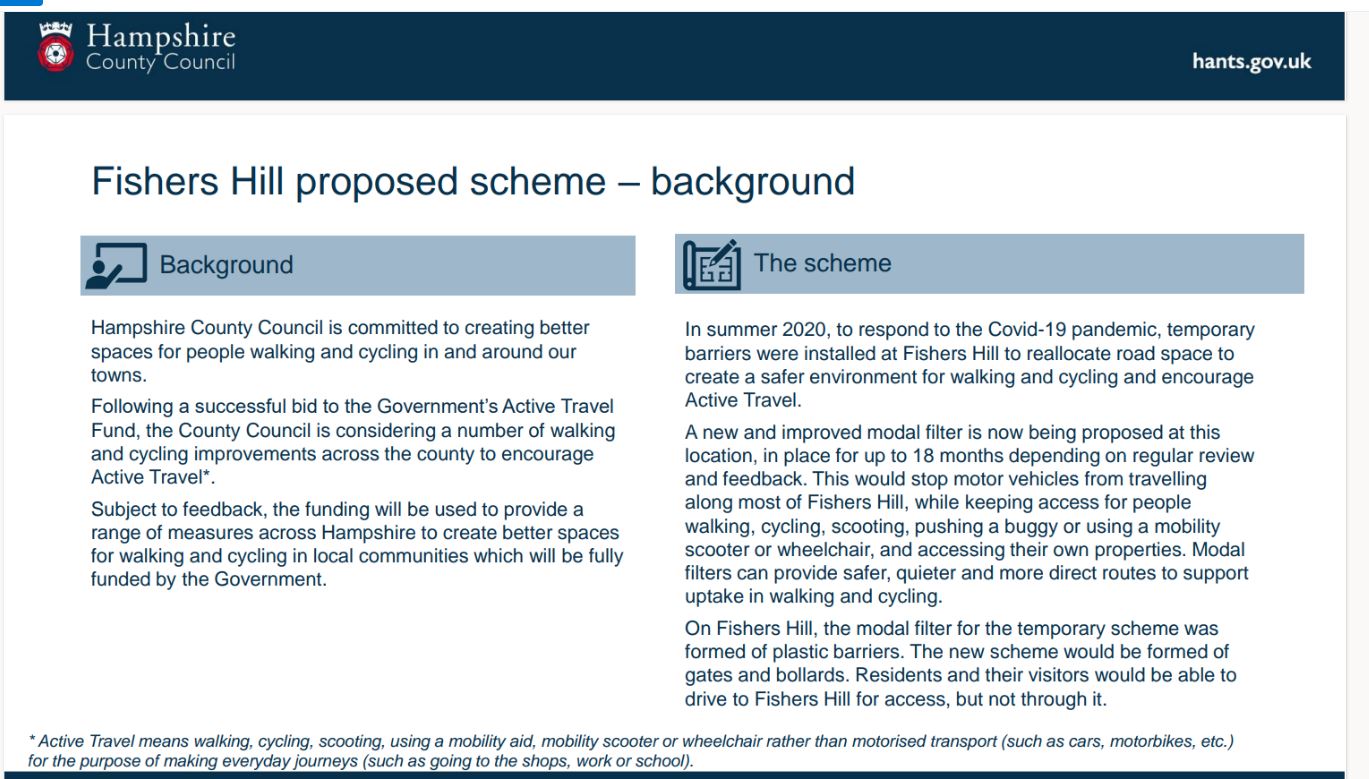
Catisfield Fishers Hill - report by Hants CC
|
|

